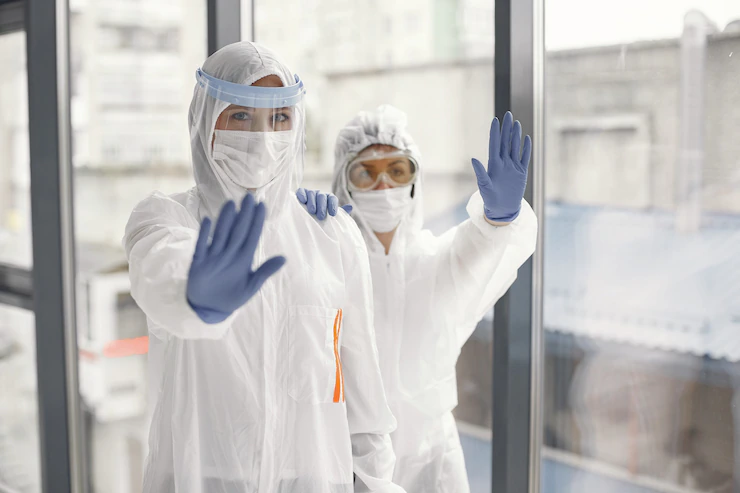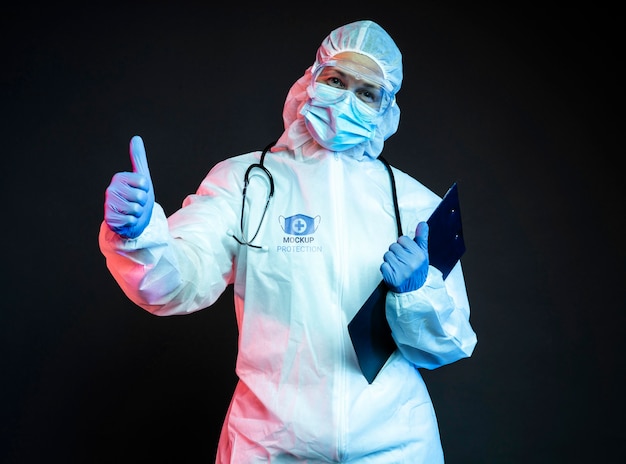Industrial Safety: 10 PPEs You Must Have

A piece of personal protective equipment (PPE) is anything worn by an employee to protect them from injuries or ailments at work. Maintaining compliance with PPE is extremely necessary when performing a risky job.
In the absence of personal protective equipment, anyone standing around is susceptible to injuries. Any employer that settles for anything less than adequate personal protective equipment exposes themselves to lawsuits.
While some workplaces where PPE is required differently, certain standards apply everywhere. Employers must provide the necessary PPE per standards set by Occupational Health and Safety Administration (OSHA).
Every company has a responsibility to conduct risk assessments, provide personal protective equipment, train their employees, and keep an eye out for the defective equipment so it can be replaced timely.
The following is a list of personal protective equipment manufacturing organizations may need.
1. Protecting your eyes

Safety goggles or glasses are necessary to protect your eyes since they are the most sensitive part of the body. Eye protection is required at some workplaces to safeguard employees from airborne particle hazards, heat, liquid metals, chemicals, and radiation hazards.
In addition to being well-fitting and comfortable, this PPE must be easy to clean and should not limit the wearer’s movement or vision. Companies that focus on branding may opt for prescription safety glasses that are trending nowadays.
Many businesses focus on making safety a priority in workplaces and offer customized sunglasses at affordable rates.
Eye safety wears consist of safety goggles (regular or prescribed), laser safety goggles, and welding shields.
2. Safety Clothing
Workers are not just supposed to protect their eyes but their entire body from hazardous conditions. Those who work with potentially dangerous materials, like boiling water, oil, welding sparks, and metals, should especially consider wearing safety clothes.
It is important to consider the chemical substances in the workplace when selecting protective clothing. Different types of body protection are available, including aprons, lab coats, jackets, overalls, and fully enclosed suits made from fire-retardant wool, cotton, rubber, plastic, and leather.
It is important to use the appropriate type and size of safety clothing to prevent injuries, burns, and other hazards while working.
Similar: Best DIY Home Security Hacks That Really Work
3. Protecting your head
Securing the head is crucial, given its importance as the most important part of the body. The chin straps on hard hats are essential to ensure they stay on even when crew members take a tumble or accidentally fall.
In dangerous areas, ensuring wearing a hard hat will provide maximum protection for the head. Usually, industrial workers wear hard hats to guard their heads against falling objects, flying debris, and objects that could hit them. It is essential for hard hats to have a slow-burning quality in addition to penetration resistance, shock resistance, and water resistance.
4. Protecting your hands
It is always advisable to wear safety gloves when handling dangerous chemicals or anything that cause skin irritation. Welding gloves or customized gloves may be required depending on the severity of the chemical. Cuts, chemical burns, and thermal burns can cause employees to severe injury.
Depending on the type of work performed by employees and the degree of exposure, companies can also choose hand protection to meet different grip requirements and provide different levels of thermal protection.
Material for gloves can include canvas, leather, fabric, metal mesh, chemical/liquid-resistant material, and rubber gloves with insulating properties.
Similar: Safety And Security At Home: Tips And Suggestions
5. Protecting your ears

Sound levels sometimes exceed the safe decibel levels in factory settings or high-volume environments. When workers are subjected to loud noise, even temporarily, the result may be pain, headaches, or hearing loss over time.
When exposed to high, loud noise levels, workers can protect their hearing by wearing earplugs and earmuffs. It also reduces the risk of damage to the ears and stress. Workers may be able to avoid these problems by wearing earplugs or earmuffs.
Those who work in an environment frequently exposed to excessive noise should wear specially molded earplugs to protect them. If the noise level is high and sustained, employers shouldn’t expect their staff to work without adequate hearing protection for long periods.
6. Protecting your feet
When you think of PPE, you naturally think of safety shoes, one of the most common PPE in most industries.
Workers can protect themselves from various risks on the job by wearing safety boots, customized boots, and leggings. Additionally, these products will keep them safe from hot, slippery, and wet environments. Workers’ footwear with steel toes prevents them from damaging their toes when they step on objects or hit hard surfaces.
Protective equipment includes toe guards, shin guards, leggings, safety shoes, etc.
7. Protecting your face
PPE, like welding shields, is required because welding can be a dangerous job. The welding shields protect against direct exposure to UV rays caused by welding emissions.
A face shield has three main components: an optical visor, lightweight metal or plastic frame, and a suspending mechanism. To prevent the inhalation of toxic materials or aerosol droplets which contain viruses, this PPE is typically worn over masks and goggles.
Researching and evaluating prospective suppliers is imperative for employers seeking to buy workplace protective equipment. Locate legitimate manufacturers from government resources, ask for certifications from suppliers, be insistent on inspecting samples for quality and legitimacy, and scrutinize contracts.
8. Using a respirator
As a result of inhaling hazardous particles, the body can suffer damage. The air around workers contains many dangerous substances, such as smoke, dust, paint, etc.
Respirators are part of the safety equipment that manufacturing workers use to prevent exposure to harmful fumes, sprays, aerosols, and dust. Ideally, the PPE should cover the nose and mouth well and fit closely to the face. The OSHA recommends using N95 filtration facepiece respirators.
9. Safety Harness
Safety harnesses protect wearers from falling from heights by securing them to the wearer. Wearing a harness or belt reduces the risk of falling.
An attached harness ensures that if the user falls, they will not strike the ground since the harness is attached to a stationary object. Work-related injuries from falling are among the most common workplace injuries, so if you work at a height, you need to make sure you’re properly equipped and wearing a harness.
10. Sensors and detectors

The newest addition to the list of personal protective equipment is proximity sensors.
Product developers updated this device to help manufacturing employees adhere to six-foot separation guidelines, commonly used to indicate proximity to hazardous objects. Using this technique makes it possible to track COVID-19 exposure at work, for example.
In conclusion
Taking heed of OSHA’s guidelines and requirements is just one part of what you should do when choosing your PPE. To comply with legal requirements, don’t just do the minimum to make your business lawfully protected. Make sure you are leading your employees into a safe environment. In addition to being ethical, it is economically smart to take care of yourself and other workers. You will be able to accomplish more if you have fewer injured workers, as they can be more productive.
Read Also:
What Are The Pros And Cons Of Brick Houses? Must Read!
An Ultimate Guide To Tree Service In Louisiana











Leave A Reply